A Scientometric Examination on Performance-Driven Optimization in Urban Block Design Research: State of the Art and Future Perspectives
Abstract
:1. Introduction
2. Methodology
2.1. Bibliometric Analysis and Data Collection
2.2. Scientometric Analysis
3. Results and Analysis
3.1. Dynamics of Publications
3.1.1. Publication Trends
3.1.2. Geographic Distribution
3.1.3. Research Areas and Influential Journals
3.1.4. Top Contributing Institutions
3.2. Thematic Keyword Analysis
3.2.1. Keyword Frequency and Trends
3.2.2. Thematic Clusters Identification
3.2.3. Emerging Keywords
3.3. Research Influence Mapping through Citations
3.3.1. Influential Works
3.3.2. Citations Influence Factors
4. Discussion
4.1. The Knowledge Structure
4.2. Specific Contents of PDO in Urban Block Design
4.2.1. Study Methods and Tools
4.2.2. Optimization Algorithm
4.3. Possible Research Directions
5. Conclusions
Author Contributions
Funding
Data Availability Statement
Conflicts of Interest
References
- Liu, H.; Huang, B.; Zhan, Q.; Gao, S.; Li, R.; Fan, Z. The influence of urban form on surface urban heat island and its planning implications: Evidence from 1288 urban clusters in China. Sustain. Cities Soc. 2021, 71, 102987. [Google Scholar] [CrossRef]
- Gordon-Larsen, P.; Nelson, M.C.; Page, P.; Popkin, B.M. Inequality in the Built Environment Underlies Key Health Disparities in Physical Activity and Obesity. Pediatrics 2006, 117, 417–424. [Google Scholar] [CrossRef] [PubMed]
- Yang, J.; Shi, B.; Shi, Y.; Marvin, S.; Zheng, Y.; Xia, G. Air pollution dispersal in high density urban areas: Research on the triadic relation of wind, air pollution, and urban form. Sustain. Cities Soc. 2020, 54, 101941. [Google Scholar] [CrossRef]
- Ng, W.-Y.; Chau, C.-K. A modeling investigation of the impact of street and building configurations on personal air pollutant exposure in isolated deep urban canyons. Sci. Total Environ. 2014, 468–469, 429–448. [Google Scholar] [CrossRef]
- Oke, T.R. Street design and urban canopy layer climate. Energy Build. 1988, 11, 103–113. [Google Scholar] [CrossRef]
- Smith, P.; Henríquez, C. Perception of thermal comfort in outdoor public spaces in the medium-sized city of Chillán, Chile, during a warm summer. Urban Clim. 2019, 30, 100525. [Google Scholar] [CrossRef]
- Jim, C.Y.; Chen, W.Y. Impacts of urban environmental elements on residential housing prices in Guangzhou (China). Landsc. Urban Plan. 2006, 78, 422–434. [Google Scholar] [CrossRef]
- Hong, B.; Lin, B. Numerical studies of the outdoor wind environment and thermal comfort at pedestrian level in housing blocks with different building layout patterns and trees arrangement. Renew. Energy 2015, 73, 18–27. [Google Scholar] [CrossRef]
- Chen, H.; Ooka, R.; Kato, S. Study on optimum design method for pleasant outdoor thermal environment using genetic algorithms (GA) and coupled simulation of convection, radiation and conduction. Build. Environ. 2008, 43, 18–30. [Google Scholar] [CrossRef]
- Brozovsky, J.; Gustavsen, A.; Gaitani, N. Zero emission neighbourhoods and positive energy districts—A state-of-the-art review. Sustain. Cities Soc. 2021, 72, 103013. [Google Scholar] [CrossRef]
- Volpe, R.; Alriols, M.G.; Schmalbach, N.M.; Fichera, A. Optimal design and operation of distributed electrical generation for Italian positive energy districts with biomass district heating. Energy Convers. Manag. 2022, 267, 115937. [Google Scholar] [CrossRef]
- Shi, X.; Yang, W. Performance-driven architectural design and optimization technique from a perspective of architects. Autom. Constr. 2013, 32, 125–135. [Google Scholar] [CrossRef]
- Mazzoli, C.; Papadaki, D.; Ferrante, A. A Parametric Approach for Optimizing Design Solutions in Urban Regeneration and Reshaping: An Application to a District Block in Bologna, Italy. Buildings 2023, 13, 3123. [Google Scholar] [CrossRef]
- Liu, K.; Xu, X.; Huang, W.; Zhang, R.; Kong, L.; Wang, X. A multi-objective optimization framework for designing urban block forms considering daylight, energy consumption, and photovoltaic energy potential. Build. Environ. 2023, 242, 110585. [Google Scholar] [CrossRef]
- Shi, Z.; Fonseca, J.A.; Schlueter, A. A parametric method using vernacular urban block typologies for investigating interactions between solar energy use and urban design. Renew. Energy 2021, 165, 823–841. [Google Scholar] [CrossRef]
- Xu, X.; Liu, Y.; Wang, W.; Xu, N.; Liu, K.; Yu, G. Urban Layout Optimization Based on Genetic Algorithm for Microclimate Performance in the Cold Region of China. Appl. Sci. 2019, 9, 4747. [Google Scholar] [CrossRef]
- Zhang, J.; Xu, L.; Shabunko, V.; Tay, S.E.R.; Sun, H.; Lau, S.S.Y.; Reindl, T. Impact of urban block typology on building solar potential and energy use efficiency in tropical high-density city. Appl. Energy 2019, 240, 513–533. [Google Scholar] [CrossRef]
- Ibrahim, Y.; Kershaw, T.; Shepherd, P.; Coley, D. On the Optimisation of Urban form Design, Energy Consumption and Outdoor Thermal Comfort Using a Parametric Workflow in a Hot Arid Zone. Energies 2021, 14, 4026. [Google Scholar] [CrossRef]
- Perišić, A.; Lazić, M.; Perišić, I. Assessment of Building Air Quality in Respect of Eight Different Urban Block Designs Based on CFD Simulations. Appl. Sci. 2023, 13, 7408. [Google Scholar] [CrossRef]
- Natanian, J.; Auer, T. Beyond nearly zero energy urban design: A holistic microclimatic energy and environmental quality evaluation workflow. Sustain. Cities Soc. 2020, 56, 102094. [Google Scholar] [CrossRef]
- Vartholomaios, A. A parametric sensitivity analysis of the influence of urban form on domestic energy consumption for heating and cooling in a Mediterranean city. Sustain. Cities Soc. 2017, 28, 135–145. [Google Scholar] [CrossRef]
- Lobaccaro, G.; Croce, S.; Vettorato, D.; Carlucci, S. A holistic approach to assess the exploitation of renewable energy sources for design interventions in the early design phases. Energy Build. 2018, 175, 235–256. [Google Scholar] [CrossRef]
- Taleghani, M.; Tenpierik, M.; van den Dobbelsteen, A.; Sailor, D.J. Heat in courtyards: A validated and calibrated parametric study of heat mitigation strategies for urban courtyards in the Netherlands. Sol. Energy 2014, 103, 108–124. [Google Scholar] [CrossRef]
- Chen, Y.; Wu, J.; Yu, K.; Wang, D. Evaluating the impact of the building density and height on the block surface temperature. Build. Environ. 2020, 168, 106493. [Google Scholar] [CrossRef]
- Veisi, O.; Shakibamanesh, A.; Rahbar, M. Using intelligent multi-objective optimization and artificial neural networking to achieve maximum solar radiation with minimum volume in the archetype urban block. Sustain. Cities Soc. 2022, 86, 104101. [Google Scholar] [CrossRef]
- Wang, W.; Liu, K.; Zhang, M.; Shen, Y.; Jing, R.; Xu, X. From simulation to data-driven approach: A framework of integrating urban morphology to low-energy urban design. Renew. Energy 2021, 179, 2016–2035. [Google Scholar] [CrossRef]
- Huang, C.; Zhang, G.; Yao, J.; Wang, X.; Calautit, J.K.; Zhao, C.; An, N.; Peng, X. Accelerated environmental performance-driven urban design with generative adversarial network. Build. Environ. 2022, 224, 109575. [Google Scholar] [CrossRef]
- Ji, H.; Peng, Y.; Ding, W. A Quantitative Study of Geometric Characteristics of Urban Space Based on the Correlation with Microclimate. Sustainability 2019, 11, 4951. [Google Scholar] [CrossRef]
- Yang, L.; Chang, H.-T.; Ma, H.; Wang, T.; Xu, J.; Chen, J. Applying Evolutionary Computation to Optimize the Design of Urban Blocks. Buildings 2023, 13, 755. [Google Scholar] [CrossRef]
- Yang, J.; Shi, B.; Xia, G.; Xue, Q.; Cao, S.-J. Impacts of Urban Form on Thermal Environment Near the Surface Region at Pedestrian Height: A Case Study Based on High-Density Built-Up Areas of Nanjing City in China. Sustainability 2020, 12, 1737. [Google Scholar] [CrossRef]
- Kim, H.-J.; Choi, W.-S.; Kim, J.-W. A study on parametric design tool for residential buildings securing valid sunlight hours on the winter solstice. J. Asian Archit. Build. Eng. 2022, 21, 1657–1676. [Google Scholar] [CrossRef]
- Xu, X.; Wu, Y.; Wang, W.; Hong, T.; Xu, N. Performance-driven optimization of urban open space configuration in the cold-winter and hot-summer region of China. Build. Simul. 2019, 12, 411–424. [Google Scholar] [CrossRef]
- Lee, C. Impacts of urban form on air quality in metropolitan areas in the United States. Comput. Environ. Urban Syst. 2019, 77, 101362. [Google Scholar] [CrossRef]
- Wu, Y.; Mashhoodi, B.; Patuano, A.; Lenzholzer, S.; Zertuche, L.N.; Acred, A. Heat-prone neighbourhood typologies of European cities with temperate climate. Sustain. Cities Soc. 2022, 87, 104174. [Google Scholar] [CrossRef]
- Ge, J.; Wang, Y.; Zhou, D.; Gu, Z.; Meng, X. Building energy demand of urban blocks in Xi’an, China: Impacts of high-rises and vertical meteorological pattern. Build. Environ. 2023, 244, 110749. [Google Scholar] [CrossRef]
- Li, J.; Wang, Y.; Xia, Y. A novel geometric parameter to evaluate the effects of block form on solar radiation towards sustainable urban design. Sustain. Cities Soc. 2022, 84, 104001. [Google Scholar] [CrossRef]
- De Lemos Martins, T.A.; Adolphe, L.; Bastos, L.E.G.; de Lemos Martins, M.A. Sensitivity analysis of urban morphology factors regarding solar energy potential of buildings in a Brazilian tropical context. Sol. Energy 2016, 137, 11–24. [Google Scholar] [CrossRef]
- Xu, X.; Yin, C.; Wang, W.; Xu, N.; Hong, T.; Li, Q. Revealing Urban Morphology and Outdoor Comfort through Genetic Algorithm-Driven Urban Block Design in Dry and Hot Regions of China. Sustainability 2019, 11, 3683. [Google Scholar] [CrossRef]
- Chen, C. Science Mapping: A Systematic Review of the Literature. J. Data Inf. Sci. 2017, 2, 1–40. [Google Scholar] [CrossRef]
- Yılmaz, Y.; Seyis, S. Mapping the scientific research of the life cycle assessment in the construction industry: A scientometric analysis. Build. Environ. 2021, 204, 108086. [Google Scholar] [CrossRef]
- Norouzi, M.; Chàfer, M.; Cabeza, L.F.; Jiménez, L.; Boer, D. Circular economy in the building and construction sector: A scientific evolution analysis. J. Build. Eng. 2021, 44, 102704. [Google Scholar] [CrossRef]
- Li, J.; Wang, J. Comprehensive utilization and environmental risks of coal gangue: A review. J. Clean. Prod. 2019, 239, 117946. [Google Scholar] [CrossRef]
- Nielsen, S.B.; Lemire, S.; Bourgeois, I.; Fierro, L.A. Mapping the evaluation capacity building landscape: A bibliometric analysis of scholarly communities and themes. Eval. Program Plann. 2023, 99, 102318. [Google Scholar] [CrossRef] [PubMed]
- Darko, A.; Chan, A.P.C.; Huo, X.; Owusu-Manu, D.-G. A scientometric analysis and visualization of global green building research. Build. Environ. 2019, 149, 501–511. [Google Scholar] [CrossRef]
- Chen, C.; Song, M. Visualizing a field of research: A methodology of systematic scientometric reviews. PLoS ONE 2019, 14, e0223994. [Google Scholar] [CrossRef]
- Yang, J.; Lu, H. Visualizing the Knowledge Domain in Urban Soundscape: A Scientometric Analysis Based on CiteSpace. Int. J. Environ. Res. Public Health 2022, 19, 13912. [Google Scholar] [CrossRef]
- Sarralde, J.J.; Quinn, D.J.; Wiesmann, D.; Steemers, K. Solar energy and urban morphology: Scenarios for increasing the renewable energy potential of neighbourhoods in London. Renew. Energy 2015, 73, 10–17. [Google Scholar] [CrossRef]
- Lobaccaro, G.; Carlucci, S.; Croce, S.; Paparella, R.; Finocchiaro, L. Boosting solar accessibility and potential of urban districts in the Nordic climate: A case study in Trondheim. Sol. Energy 2017, 149, 347–369. [Google Scholar] [CrossRef]
- Mavromatidis, G.; Orehounig, K.; Carmeliet, J. Design of distributed energy systems under uncertainty: A two-stage stochastic programming approach. Appl. Energy 2018, 222, 932–950. [Google Scholar] [CrossRef]
- Yuan, M.; Song, Y.; Huang, Y.; Shen, H.; Li, T. Exploring the association between the built environment and remotely sensed PM2.5 concentrations in urban areas. J. Clean. Prod. 2019, 220, 1014–1023. [Google Scholar] [CrossRef]
- Xu, T.; Jia, H.; Wang, Z.; Mao, X.; Xu, C. SWMM-based methodology for block-scale LID-BMPs planning based on site-scale multi-objective optimization: A case study in Tianjin. Front. Environ. Sci. Eng. 2017, 11, 1. [Google Scholar] [CrossRef]
- Li, X.; Li, Y.; Jia, T.; Zhou, L.; Hijazi, I.H. The six dimensions of built environment on urban vitality: Fusion evidence from multi-source data. Cities 2022, 121, 103482. [Google Scholar] [CrossRef]
- Sevtsuk, A.; Kalvo, R.; Ekmekci, O. Pedestrian accessibility in grid layouts: The role of block, plot and street dimensions. Urban Morphol. 2016, 20, 89–106. [Google Scholar] [CrossRef]
- Natanian, J.; Aleksandrowicz, O.; Auer, T. A parametric approach to optimizing urban form, energy balance and environmental quality: The case of Mediterranean districts. Appl. Energy 2019, 254, 113637. [Google Scholar] [CrossRef]
- Zhang, Z.; Fisher, T.; Feng, G. Assessing the Rationality and Walkability of Campus Layouts. Sustainability 2020, 12, 10116. [Google Scholar] [CrossRef]
- Sun, R.; Liu, J.; Lai, D.; Liu, W. Building form and outdoor thermal comfort: Inverse design the microclimate of outdoor space for a kindergarten. Energy Build. 2023, 284, 112824. [Google Scholar] [CrossRef]
- Xia, B.; Li, Z. Optimized methods for morphological design of mesoscale cities based on performance analysis: Taking the residential urban blocks as examples. Sustain. Cities Soc. 2021, 64, 102489. [Google Scholar] [CrossRef]
- Shareef, S. The impact of urban morphology and building’s height diversity on energy consumption at urban scale. The case study of Dubai. Build. Environ. 2021, 194, 107675. [Google Scholar] [CrossRef]
- Shareef, S.; Altan, H. Urban block configuration and the impact on energy consumption: A case study of sinuous morphology. Renew. Sustain. Energy Rev. 2022, 163, 112507. [Google Scholar] [CrossRef]
- Jiang, Y.; Song, D.; Shi, T.; Han, X. Adaptive Analysis of Green Space Network Planning for the Cooling Effect of Residential Blocks in Summer: A Case Study in Shanghai. Sustainability 2018, 10, 3189. [Google Scholar] [CrossRef]
- Fontecha, J.E.; Guaje, O.O.; Duque, D.; Akhavan-Tabatabaei, R.; Rodríguez, J.P.; Medaglia, A.L. Combined maintenance and routing optimization for large-scale sewage cleaning. Ann. Oper. Res. 2020, 286, 441–474. [Google Scholar] [CrossRef]
- Wu, Y. Optimizing block morphology for reducing traffic pollutant concentration in adjacent external spaces of street canyons: A machine learning approach. Build. Environ. 2023, 242, 110587. [Google Scholar] [CrossRef]
- He, Y.; Tablada, A.; Deng, J.-Y.; Shi, Y.; Wong, N.H.; Ng, E. Linking of pedestrian spaces to optimize outdoor air ventilation and quality in tropical high-density urban areas. Urban Clim. 2022, 45, 101249. [Google Scholar] [CrossRef]
- Wang, S.; Qu, X. Rural bus route design problem: Model development and case studies. KSCE J. Civ. Eng. 2015, 19, 1892–1896. [Google Scholar] [CrossRef]
- Wu, Y.; Zhan, Q.; Quan, S.J.; Fan, Y.; Yang, Y. A surrogate-assisted optimization framework for microclimate-sensitive urban design practice. Build. Environ. 2021, 195, 107661. [Google Scholar] [CrossRef]
- Feng, W.; Ding, W.; Fei, M.; Yang, Y.; Zou, W.; Wang, L.; Zhen, M. Effects of traditional block morphology on wind environment at the pedestrian level in cold regions of Xi’an, China. Environ. Dev. Sustain. 2021, 23, 3218–3235. [Google Scholar] [CrossRef]
- Xia, B.; Li, Z. Optimization of residential urban-block morphology based on its synthetic effects on indoor and outdoor natural lighting environments. Sustain. Cities Soc. 2023, 97, 104698. [Google Scholar] [CrossRef]
- Gruler, A.; Quintero-Araújo, C.L.; Calvet, L.; Juan, A.A. Waste collection under uncertainty: A simheuristic based on variable neighbourhood search. Eur. J. Ind. Eng. 2017, 11, 228–255. [Google Scholar] [CrossRef]
- Tabasi, S.F.; Rafizadeh, H.R.; Garmaroudi, A.A.; Banihashemi, S. Optimizing urban layouts through computational generative design: Density distribution and shape optimization. Archit. Eng. Des. Manag. 2023, 1–21. [Google Scholar] [CrossRef]
- Xie, M.; Cheng, Y.; Dong, Z. Study on Multi-Objective Optimization of Sponge Facilities Combination at Urban Block Level: A Residential Complex Case Study in Nanjing, China. Water 2022, 14, 3292. [Google Scholar] [CrossRef]


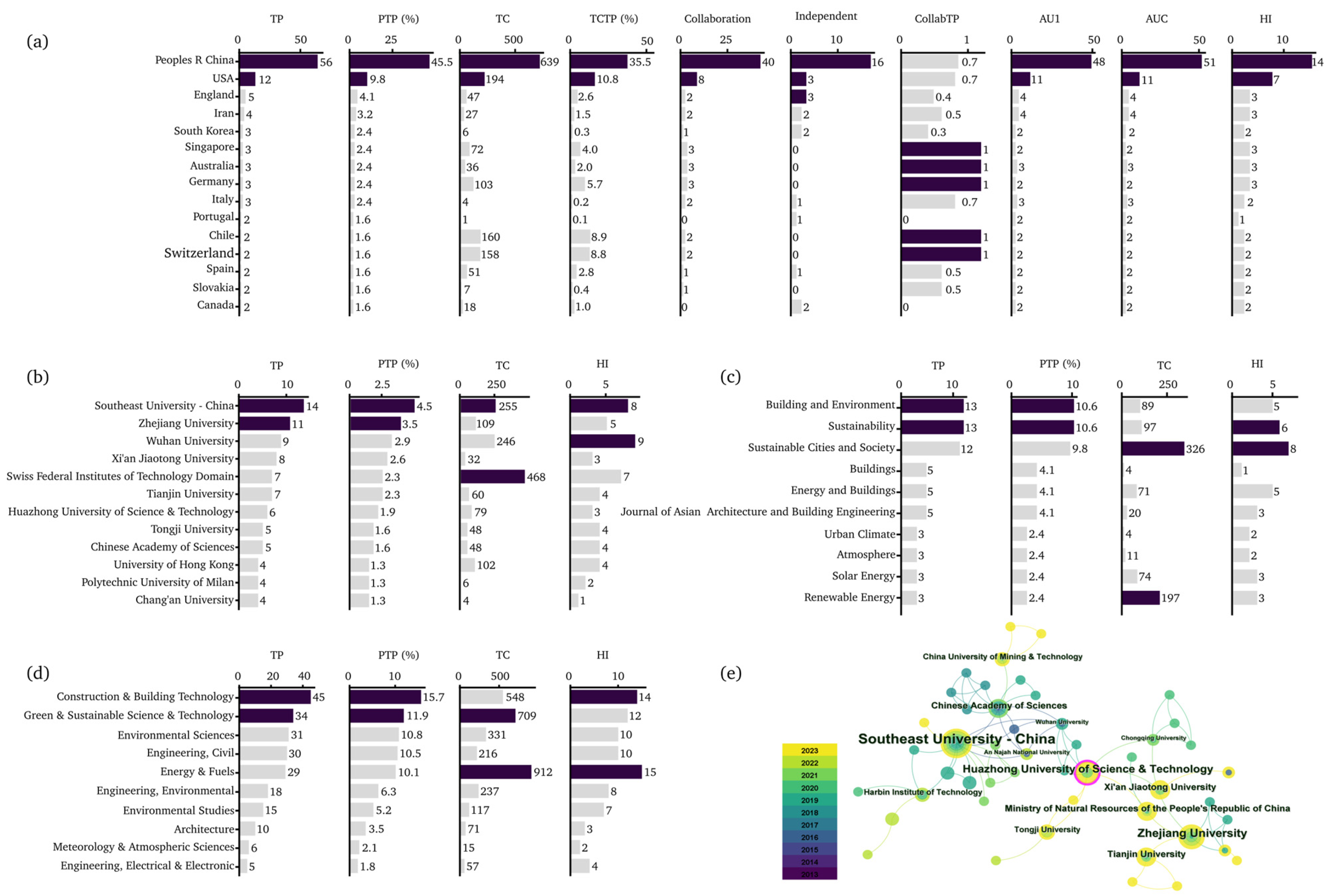
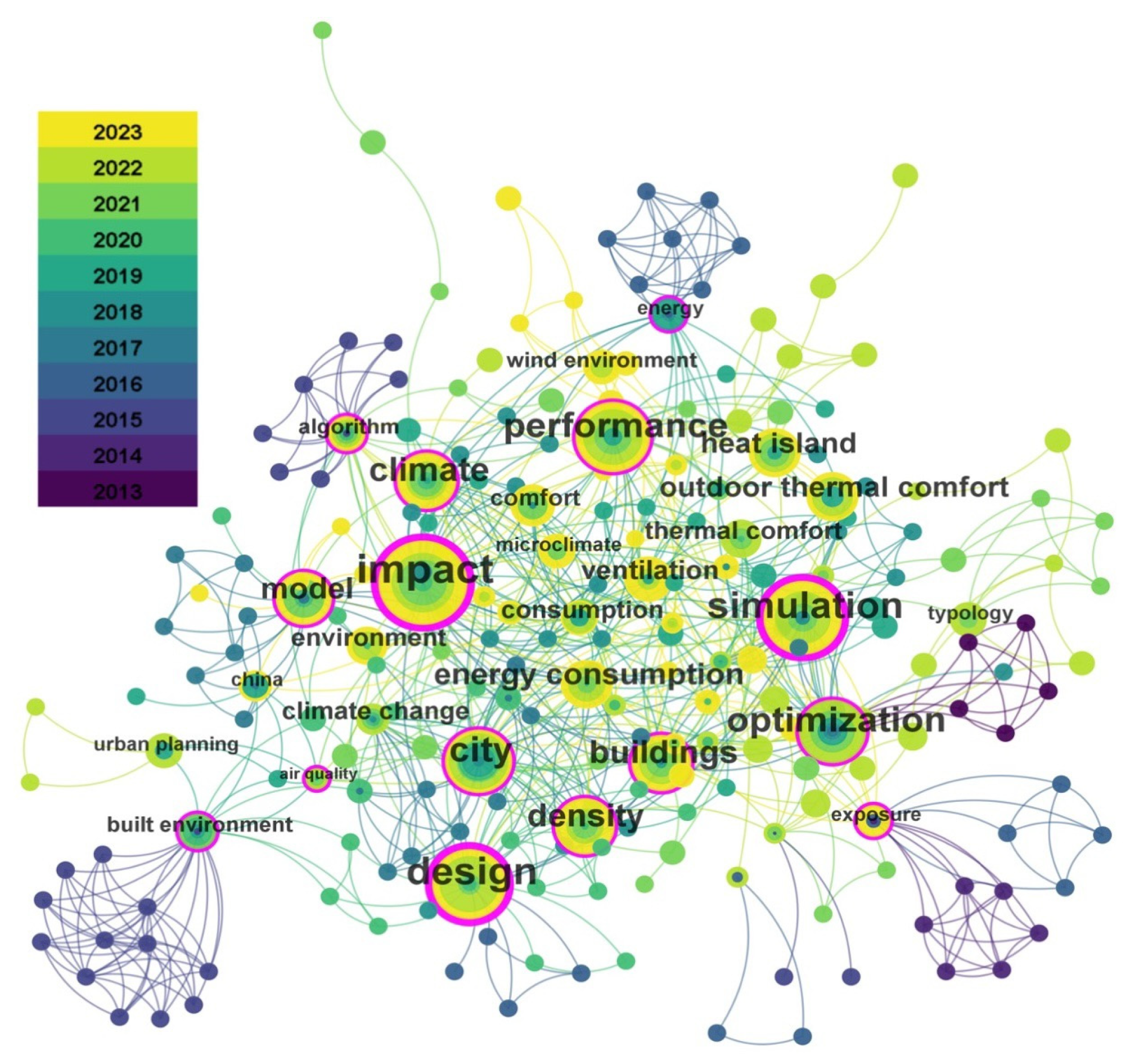
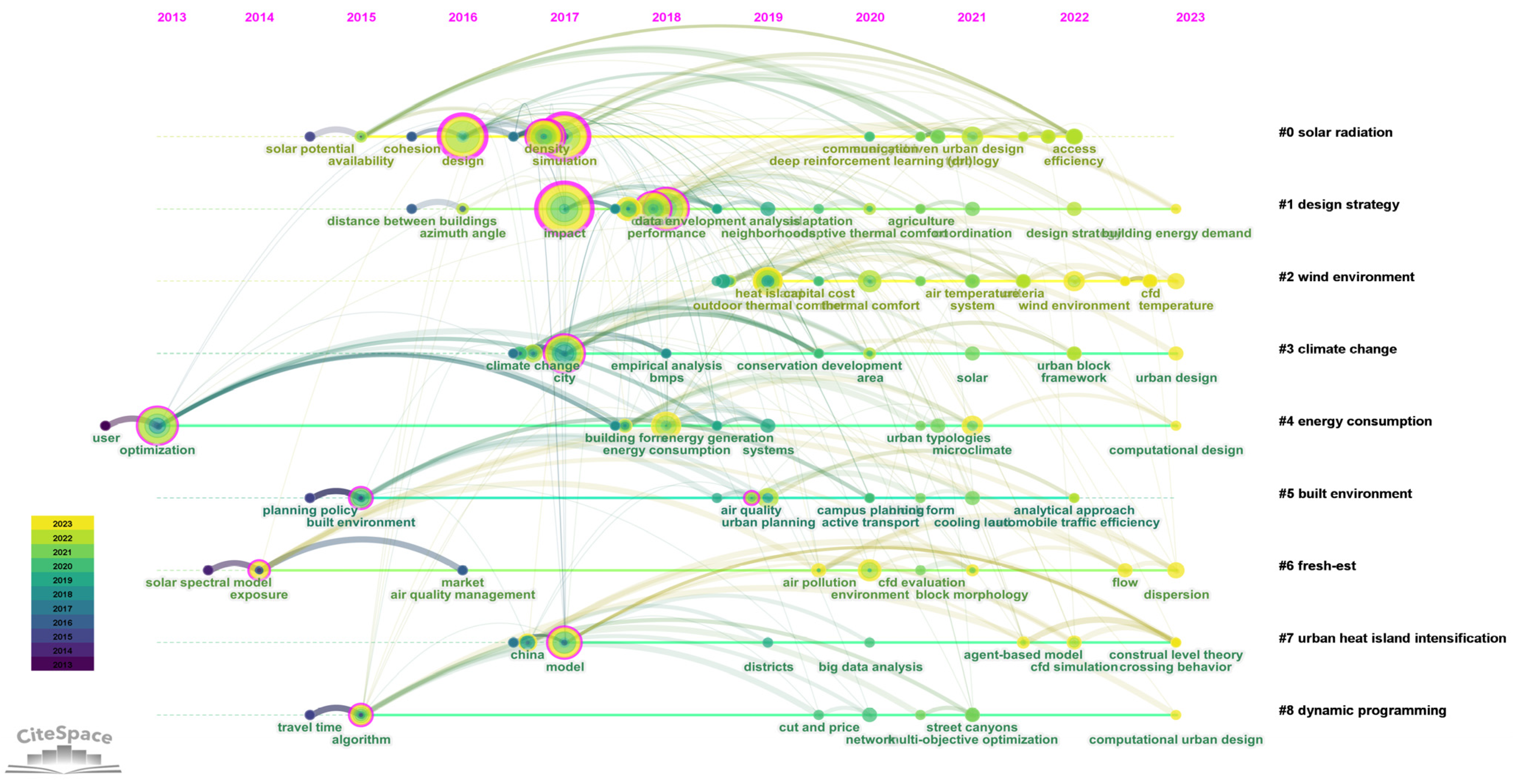

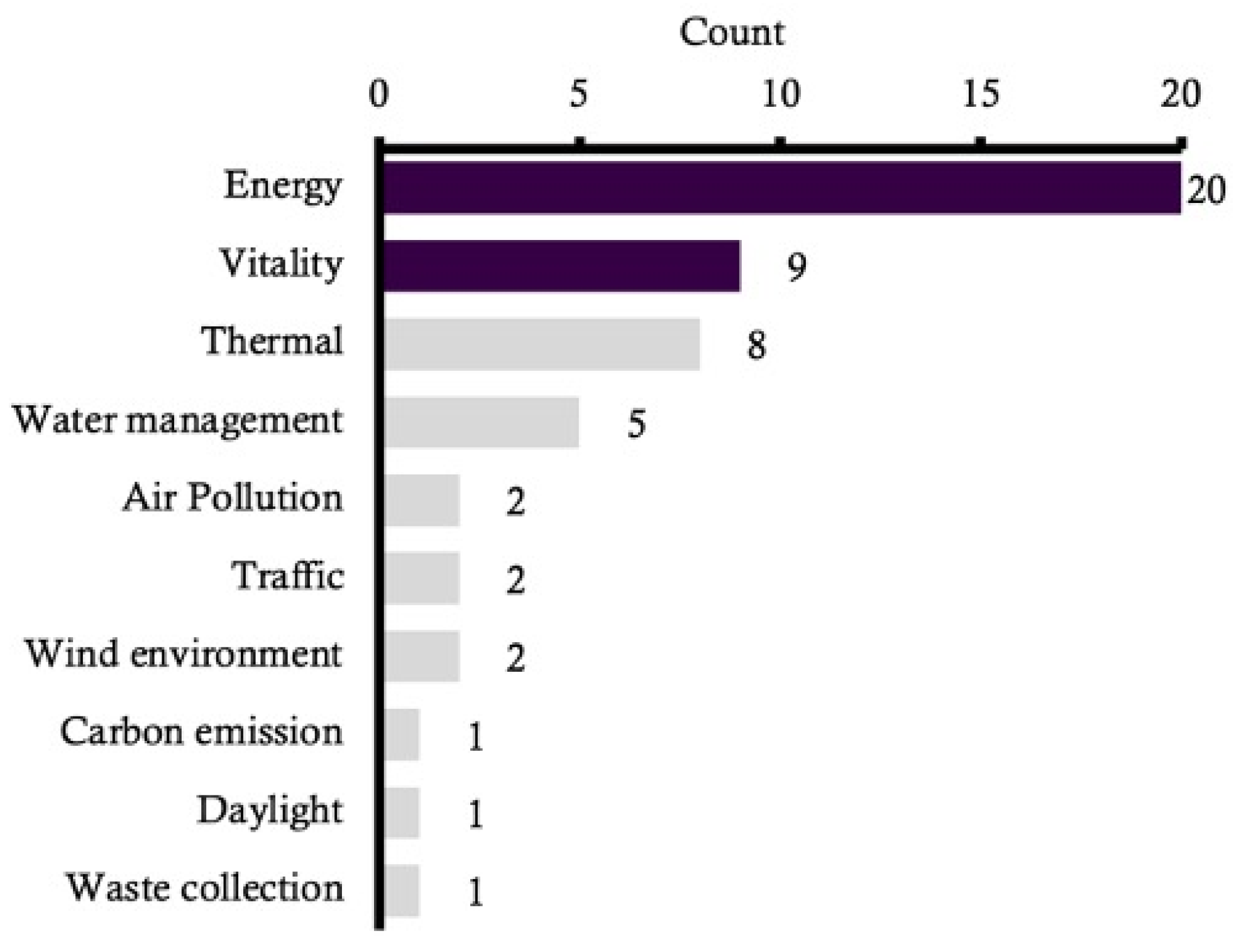
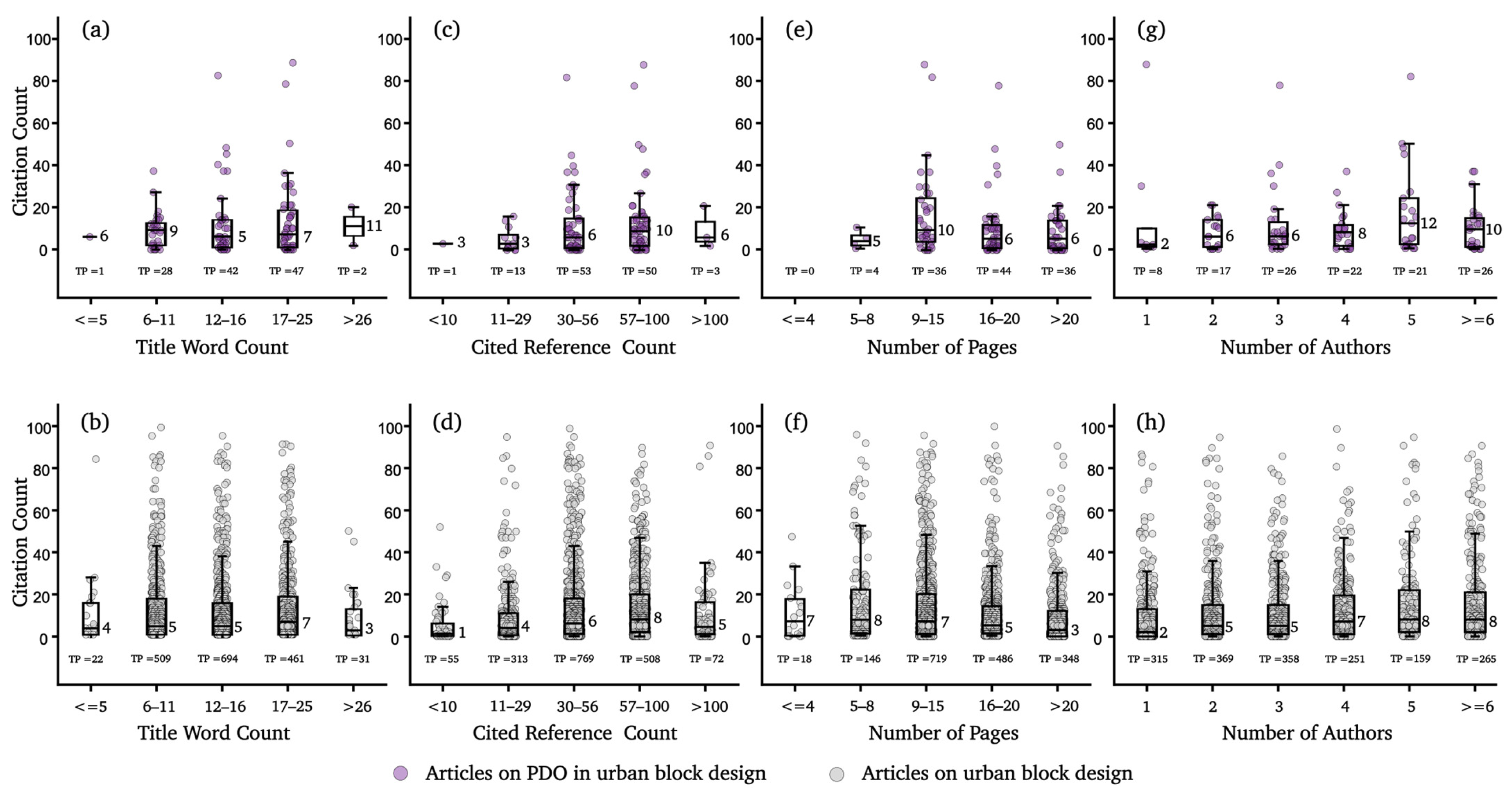
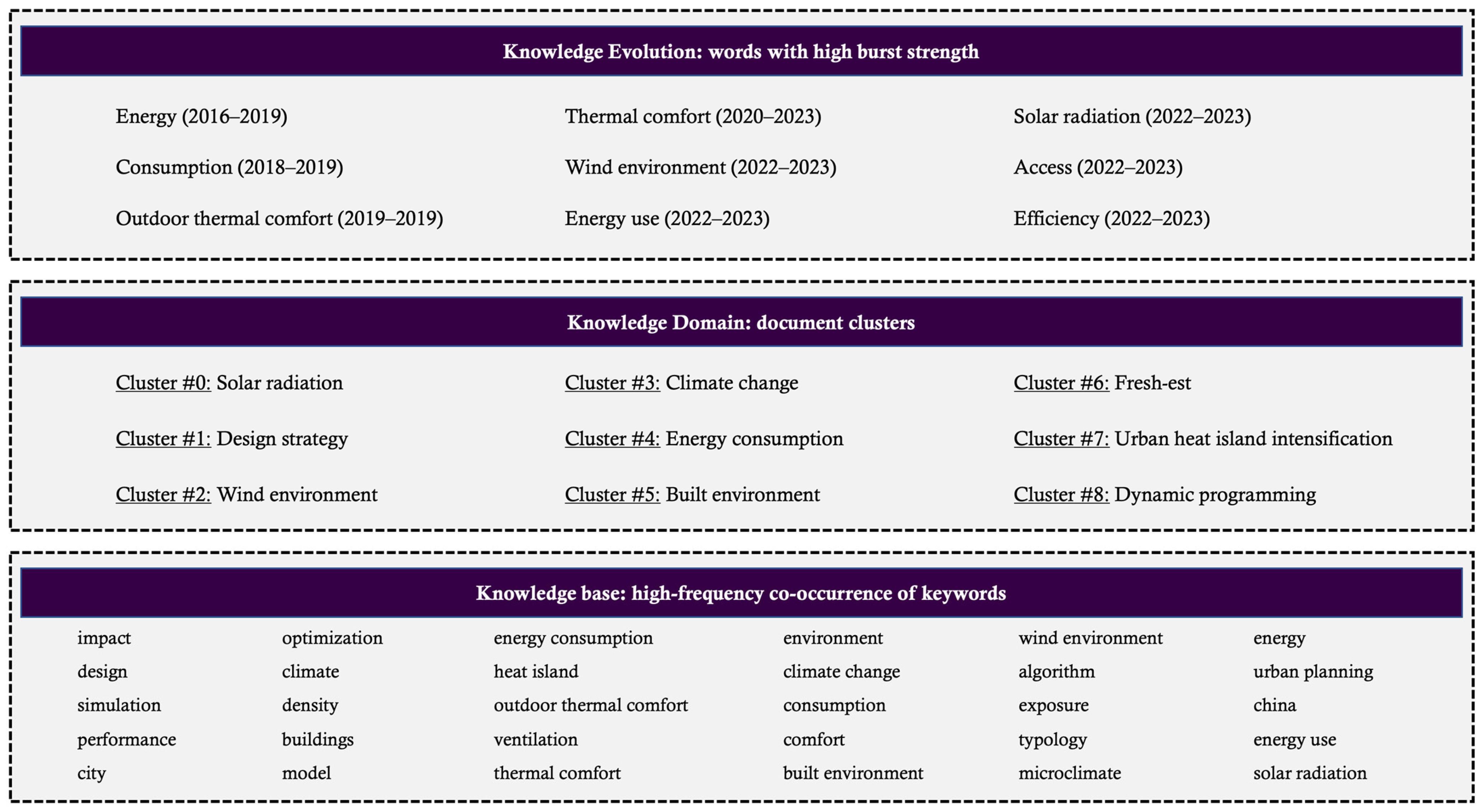
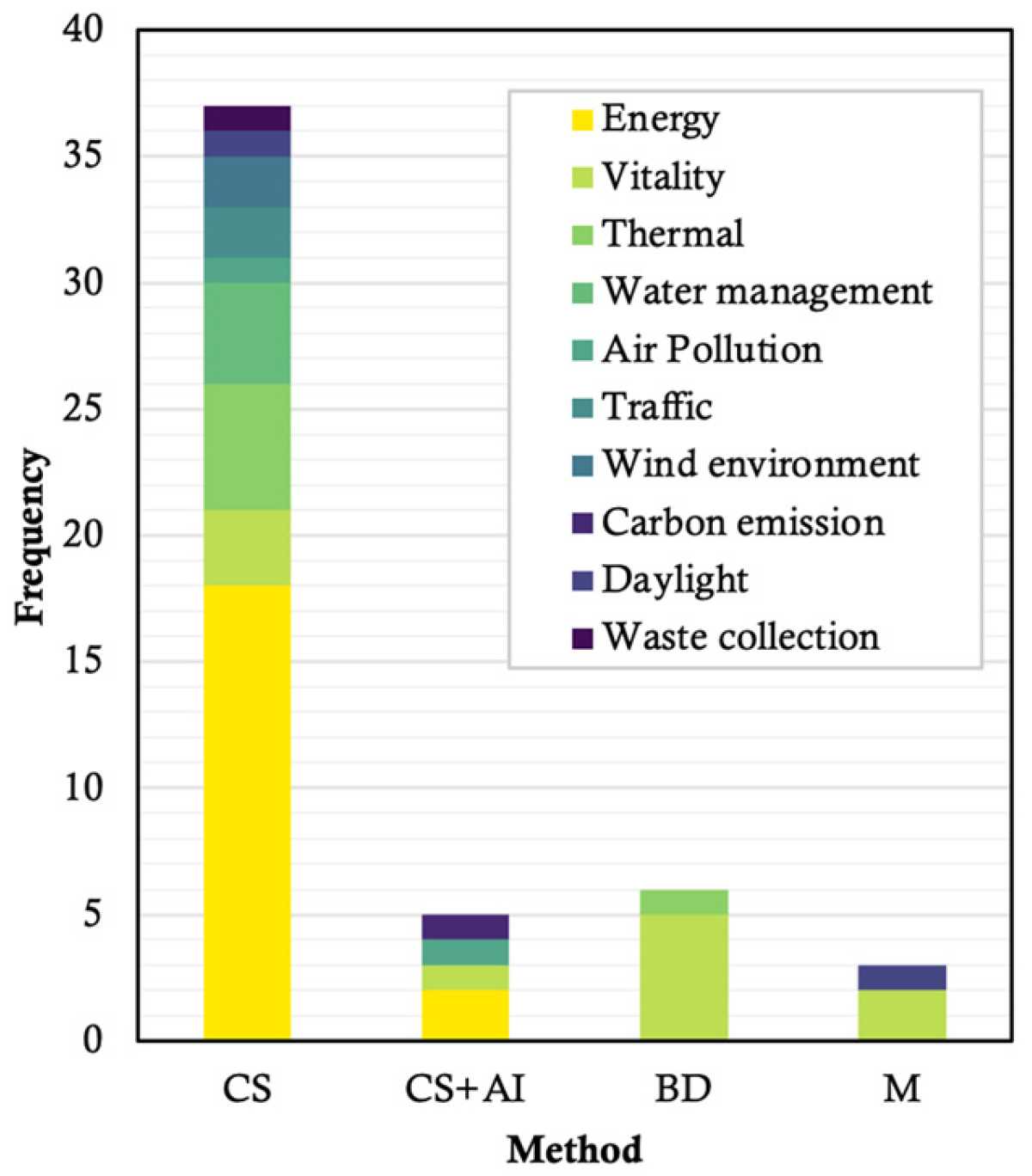
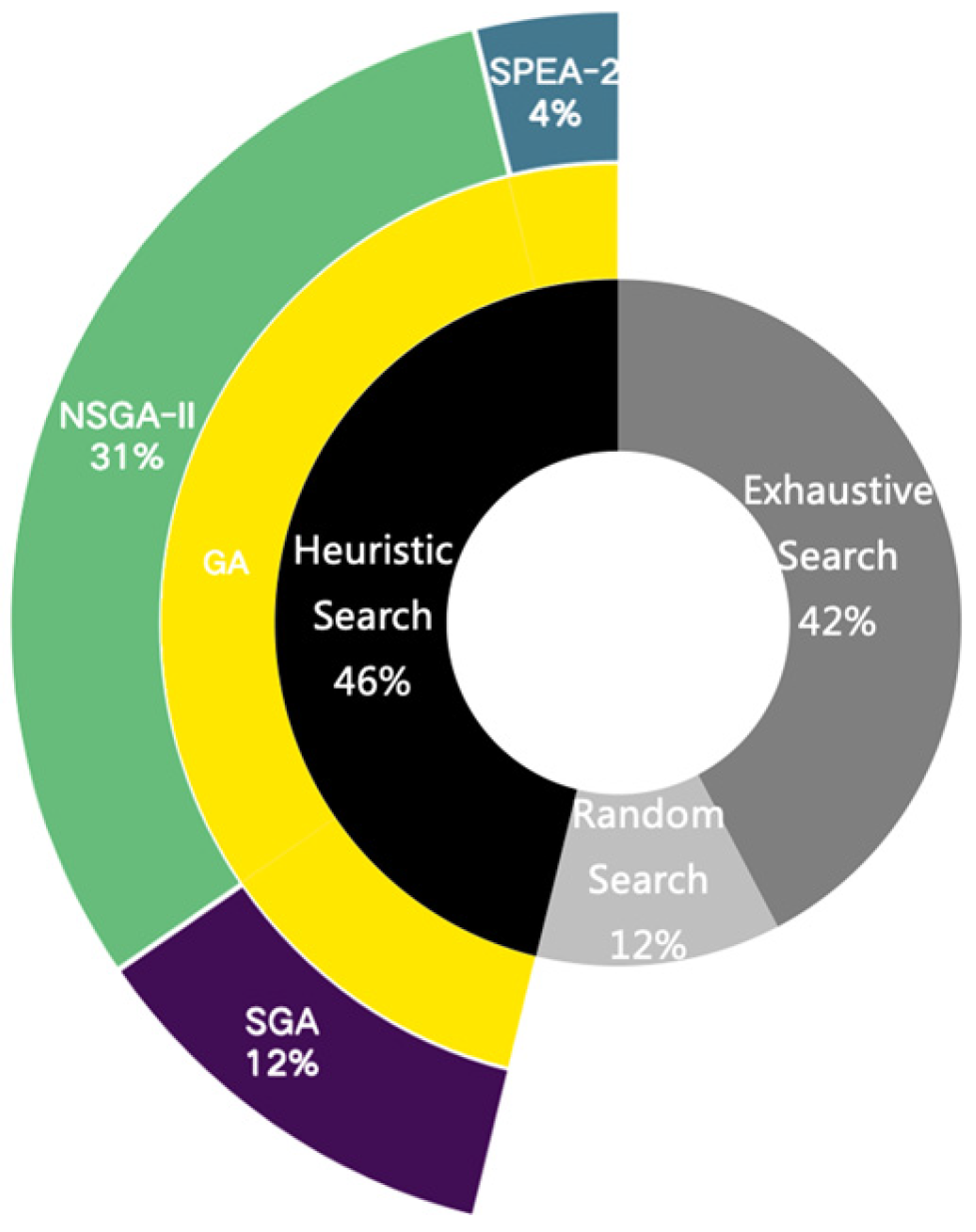
| Block Morphological Indicators | Building Morphological Indicators | ||||
|---|---|---|---|---|---|
| The Land Area | LA | [15,25] | Floor Area Ratio | FAR | [15,26,27] |
| The Openness | OP | [28,29] | Building Height | BH | [30,31,32] |
| Spatial Compactness | SCS | [33,34] | Building Height Fall | HF | [27,35] |
| Site Coverage | SC | [15,27,36] | Block Surface Ratio | BSR | [36] |
| The Sky View Factor | SVF | [35,36] | Roof Surface Ratio | RSR | [24,37] |
| Enclosure Degree | ED | [35] | Width to Height Ratio | WHR | [26,36] |
| Building Density | BD | [30,35] | Building Shape Coefficient | BSC | [36] |
| Street Orientation | SO | [25,38] | Building Form | BF | [27,38] |
| Rank | Keywords | Frequency | Centrality |
|---|---|---|---|
| 1 | impact | 31 | 0.24 |
| 2 | design | 27 | 0.22 |
| 3 | simulation | 21 | 0.35 |
| 4 | performance | 20 | 0.14 |
| 5 | city | 17 | 0.17 |
| 6 | optimization | 17 | 0.15 |
| 7 | climate | 15 | 0.18 |
| 8 | density | 14 | 0.12 |
| 9 | buildings | 13 | 0.1 |
| 10 | model | 12 | 0.17 |
| 11 | energy consumption | 11 | 0.09 |
| 12 | heat island | 9 | 0.03 |
| 13 | outdoor thermal comfort | 9 | 0.01 |
| 14 | ventilation | 8 | 0.04 |
| 15 | thermal comfort | 7 | 0.04 |
| ID | Size | Silhouette | Mean Year | Cluster Label (LLR) and Key Terms |
|---|---|---|---|---|
| #0 | 35 | 0.878 | 2019 | # Solar radiation; solar potential; resource management; sensitivity analysis; daylighting |
| #1 | 30 | 0.92 | 2018 | # Design strategy; impact; climate; pocket park; neighborhoods |
| #2 | 29 | 0.79 | 2021 | # Wind environment; thermal stress; wind corridor; wind; street grid |
| #3 | 25 | 0.884 | 2018 | # Climate change; agent-based spatial modelling; runoff; risk analysis; generative adversarial network |
| #4 | 23 | 0.791 | 2017 | # Energy consumption; traffic conflicts; ladybug tools; two-stage stochastic programming; uncertainty |
| #5 | 23 | 0.914 | 2017 | # Built environment; air quality; cluster analysis; planning policy; livability health promotion |
| #6 | 17 | 0.89 | 2017 | # Fresh-est; optimizations; ultraviolet; shell; traffic pollutant |
| #7 | 17 | 0.957 | 2019 | # Urban heat island intensification; urban morphology indicators; stormwater management; cover changes; path finding; blocking |
| #8 | 15 | 0.895 | 2017 | # Dynamic programming; microclimate-sensitive design; small data; suburban bus route design; parametric design |
| No | Author | Citation | Year | Journal | DOI |
|---|---|---|---|---|---|
| 1 | Sarralde et al. [47] | 146 | 2015 | Renewable Energy | https://doi.org/10.1016/j.renene.2014.06.028, accessed on 30 January 2024. |
| 2 | Mavromatidis et al. [49] | 128 | 2018 | Applied Energy | https://doi.org/10.1016/j.apenergy.2018.04.019, accessed on 30 January 2024. |
| 3 | Yang et al. [3] | 109 | 2020 | Sustainable Cities And Society | https://doi.org/10.1016/j.scs.2019.101941, accessed on 30 January 2024. |
| 4 | Vartholomaios et al. [21] | 88 | 2017 | Sustainable Cities And Society | https://doi.org/10.1016/j.scs.2016.09.006, accessed on 30 January 2024. |
| 5 | Xu et al. [51] | 82 | 2017 | Frontiers of Environmental Science & Engineering | https://doi.org/10.1007/s11783-017-0934-6, accessed on 30 January 2024. |
| 6 | Natanian et al. [54] | 78 | 2019 | Applied Energy | https://doi.org/10.1016/j.apenergy.2019.113637, accessed on 30 January 2024. |
| 7 | Lobaccaro et al. [48] | 50 | 2017 | Solar Energy | https://doi.org/10.1016/j.solener.2017.04.015, accessed on 30 January 2024. |
| 8 | Li et al. [52] | 48 | 2022 | Cities | https://doi.org/10.1016/j.cities.2021.103482, accessed on 30 January 2024. |
| 9 | Yuan et al. [50] | 45 | 2019 | Journal of Cleaner Production | https://doi.org/10.1016/j.jclepro.2019.02.236, accessed on 30 January 2024. |
| 10 | Sevtsuk et al. [53] | 40 | 2016 | Urban Morphology | https://doi.org/10.51347/jum.v20i2.4056, accessed on 30 January 2024. |
| Building Performance | Source | Performance Indicators | Tools |
|---|---|---|---|
| Energy | Liu et al. [14]; Xia et al. [57] 2/1/2024 4:48:00 PM | Average monthly load match index; Total energy use intensity; Sunlight hours; Annual energy consumption; Holistic analysis; Annual solar radiation access | Grasshopper platform: Dragonfly; Honeybee; Ladybug |
| Shareef et el. [58,59] | Cooling plant load; The average of conduction heat gain | IES-VE software | |
| Ge et al. [35] | Annual heating load; Annual cooling load | Grasshopper platform: The Urban Renewable Building and Neighborhood optimization (URBANopt) | |
| Thermal | Sun et al. [56]; Xu et al. [32,38] 2/1/2024 4:48:00 PM | Universal Thermal Climate Index (UTCI) | Grasshopper platform: Butterfly; Honeybee; Ladybug |
| Jiang et al. [60] | Air temperature | ENVI-met | |
| Water management | Fontecha et al. [61] | Feasibility; Maintenance cost per unit time | An iterative procedure with two models: a maintenance model (MM) and a routing model (RM) |
| Air pollution | Wu at el. [62] | Air quality index (AQI); Concentration | OpenFOAM |
| He et al. [63] | Area-averaged velocity; Concentration | scSTREAM | |
| Traffic | Wang and Qu [64] | The total length of the bus route | Self-coded dynamic programming approach |
| Wind environment | Wu et al. [65] | Wind velocity Gini index; Wind velocity ratio | Phoenics |
| Feng et al. [66] | Mean pedestrian-level wind velocity ratio | ENVI-met | |
| Daylight | Xia et al. [67] | Daylighting factor; Sky view factor | Grasshopper platform: Honeybee; Ladybug |
| Waste collection | Gruler et al. [68] | Total cost of collecting waste | MATLAB; Lingo |
Disclaimer/Publisher’s Note: The statements, opinions and data contained in all publications are solely those of the individual author(s) and contributor(s) and not of MDPI and/or the editor(s). MDPI and/or the editor(s) disclaim responsibility for any injury to people or property resulting from any ideas, methods, instructions or products referred to in the content. |
© 2024 by the authors. Licensee MDPI, Basel, Switzerland. This article is an open access article distributed under the terms and conditions of the Creative Commons Attribution (CC BY) license (https://creativecommons.org/licenses/by/4.0/).
Share and Cite
Xiong, Y.; Liu, T.; Qin, Y.; Chen, H. A Scientometric Examination on Performance-Driven Optimization in Urban Block Design Research: State of the Art and Future Perspectives. Buildings 2024, 14, 403. https://doi.org/10.3390/buildings14020403
Xiong Y, Liu T, Qin Y, Chen H. A Scientometric Examination on Performance-Driven Optimization in Urban Block Design Research: State of the Art and Future Perspectives. Buildings. 2024; 14(2):403. https://doi.org/10.3390/buildings14020403
Chicago/Turabian StyleXiong, Yuya, Taiyu Liu, Yinghong Qin, and Hong Chen. 2024. "A Scientometric Examination on Performance-Driven Optimization in Urban Block Design Research: State of the Art and Future Perspectives" Buildings 14, no. 2: 403. https://doi.org/10.3390/buildings14020403






